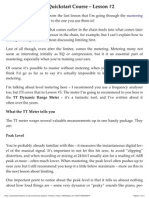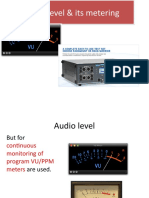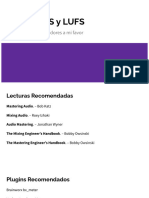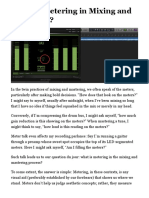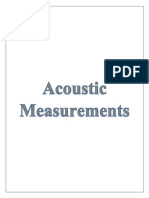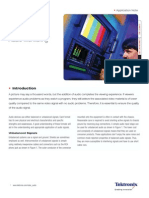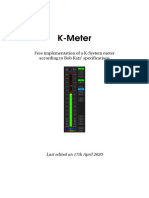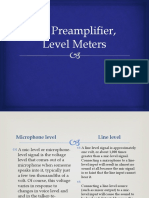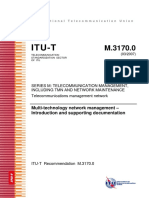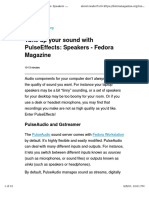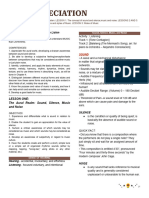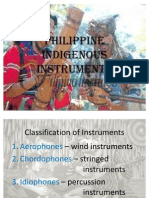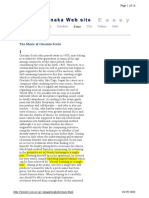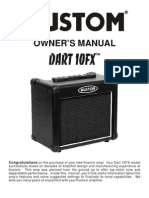100% found this document useful (1 vote)
96 views6 pagesAudio Loudness Standards for Linux
This document introduces a new Linux application that implements loudness and level measuring algorithms from the EBU R-128 recommendation. Current metering systems like VU meters, peak meters, and pseudo peak meters do not accurately measure subjective loudness. The EBU R-128 standard aims to define loudness levels for audio content to ease production and allow automation of loudness adjustments. The new application measures loudness according to this standard to allow content to be produced and played at consistent loudness levels.
Uploaded by
gencinozaCopyright
© © All Rights Reserved
We take content rights seriously. If you suspect this is your content, claim it here.
Available Formats
Download as PDF, TXT or read online on Scribd
100% found this document useful (1 vote)
96 views6 pagesAudio Loudness Standards for Linux
This document introduces a new Linux application that implements loudness and level measuring algorithms from the EBU R-128 recommendation. Current metering systems like VU meters, peak meters, and pseudo peak meters do not accurately measure subjective loudness. The EBU R-128 standard aims to define loudness levels for audio content to ease production and allow automation of loudness adjustments. The new application measures loudness according to this standard to allow content to be produced and played at consistent loudness levels.
Uploaded by
gencinozaCopyright
© © All Rights Reserved
We take content rights seriously. If you suspect this is your content, claim it here.
Available Formats
Download as PDF, TXT or read online on Scribd
/ 6

